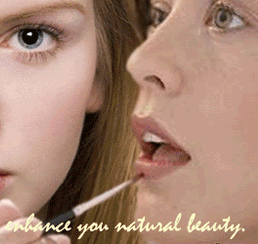|
|
|
Home :: Onycholysis
Onycholysis Information - Causes, Sign & Symptoms, Cure, Treatment of Onycholysis
Alternative names of onycholysis :: Beau's lines, Fingernail abnormalities
What is Onycholysis ?
Onycholysis is the painless separation of the nail from the nail bed. Onycholysis is a common problem. It can be a sign of skin disease, an infection or the result of injury, but most cases are seen in women with long fingernails. Onycholysis can be a sign of skin disease, an infection or the result of injury, but most cases are seen in women with long fingernails.
Discoloration underneath the nail may occur as a result of secondary infection.
Spontaneous separation of the nail plate starts at the distal free margin and progresses proximally. Nail plate separation can be confined to the nail's lateral borders (rare).
Fungal infection and the skin disease psoriasis can cause onycholysis. These often cannot be told apart by examining alone, and a test for fungus needs to be done. Certain medications (Oxsoralen, Tetracycline, Minocycline, Naproxen) makes a person have abnormal sensitivity to light. One can get sunburn under the nails, which causes onycholysis. In rare cases all the nails are affected and then it can be a sign of iron deficiency or thyroid over-activity.
What are the causes of Onycholysis ?
Onycholysis condition is usually self limiting. Some common causes of Onycholysis includes :-
- A crush injury to base of the nail or the nail bed may produce a permanent deformity. This is one of the common cause of onycholysis.
- Chronic exposure to moisture or to nail polish can produce brittle nails with peeling of the edge of the nail .
- Prolonged immersion of nails in water.
- Chronic exposure to moisture or to nail polish can produce brittle nails with peeling of the edge of the nail.
- Overzealous manicure, e.g. manicure tools pushing beneath the nail to clear dirt and overuse of nail cosmetics
- Moisture are the most common causes of onycholysis
- Nail biting can be a sign of anxiety, chronic tension or uncontrollable compulsion
- Chronic picking or rubbing of the skin behind the visible portion of the nail can produce a washboard nail.
What are the signs and symptoms of onycholysis?
- Discoloration underneath the nail may occur as a result of secondary infection.
- It is usually painless as the separation occurs gradually. Pain may occur if nail is further detached from the nail bed as result of trauma or if active infection sets in.
- Larger portion of the nail is opaque, can be whitened or discoloured to yellow or green.
Treatment and Cure of Onycholysis :
Some of the common home treatment for the oncholysis are
- For nail abnormalities like Onycholysis, due to nail biting, picking, and tearing, stop these behaviors. Get psychological help (in extreme cases) or encouragement to stop as needed. Keep hangnails clipped.
- For brittle nails, keep the nails short and avoid nail polish. Use an emollient (skin softening) cream after washing or bathing.
- Affected person with Onycholysis should wear light cotton gloves under vinyl gloves for wet work.
- Affected person with Onycholysis do not wear shoes that squeeze the toes together, and always cut the nails straight across along the top.
- Avoid injuring the affected nail, and keep the nail bed dry.
- Avoid exposure to contact irritants such as nail enamel and enamel remover or solvents and detergents.
|
|





